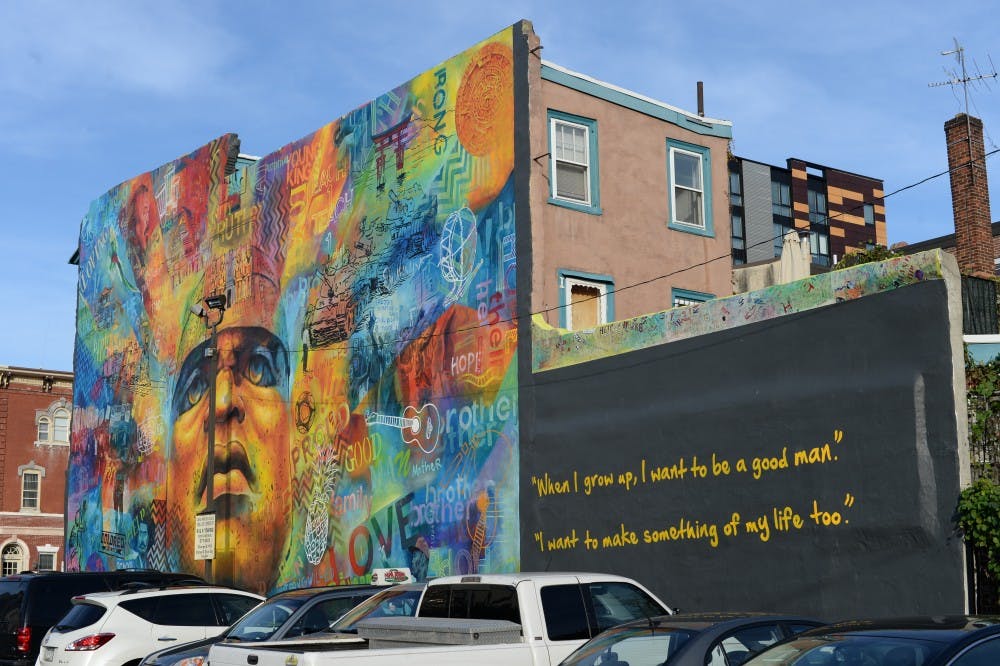I walked just a few feet past the restaurant I BYOed at this weekend to get to the location of my ‘class trip’. Just beyond what many would call the Penn bubble, my Mural Arts class met at 4008 Chestnut for the dedication of a brand new mural , "Building Brotherhood: Engaging Males of Color." The piece is the Mural Arts and the City’s Department of Behavioral Health and Intellectual disAbility Services' response to President Obama’s nationwide challenge to different cities to improve the odds of success for boys and men of color. I rounded the corner and the mural came into sight: brilliant colors and intricate overlays of images, words, and symbols overwhelmed my senses and stirred my emotions.

A piece of public art does not exist independently of the space it inhabits. The mural’s proximity to Penn’s campus confronts Penn students with a visual manifestation of the struggles men of color in the greater Philadelphia community face. “I think this mural is a call to action for Penn students that our city is made up of a lot of people, many of whom do not look like us, and their voice deserves to be heard. A mural like this is about changing systems,” says Jane Golden, Executive Director of the Mural Arts program and Penn Professor in the Fine Arts department.

As I stood, steps away from my favorite grubhub locations and go-to dry cleaner, I felt both miles away and rooted in my location, mesmerized and stirred by the beauty I found on a class trip to Chestnut Street.

